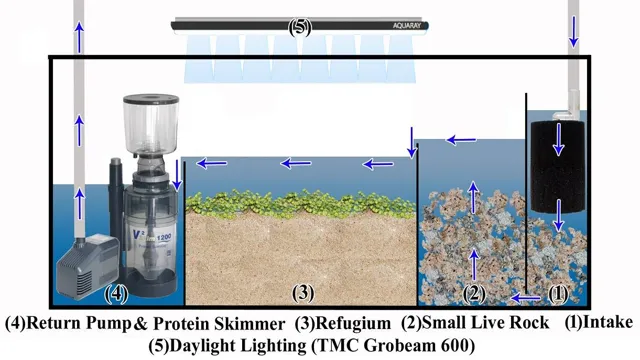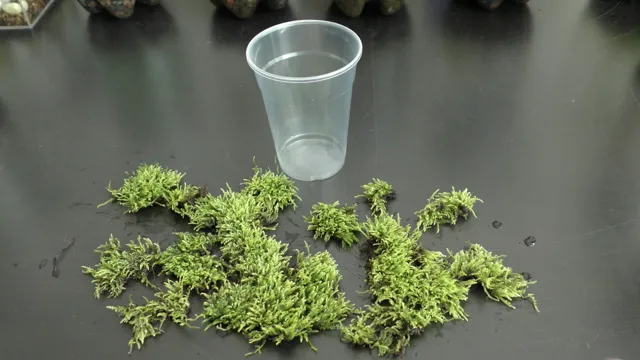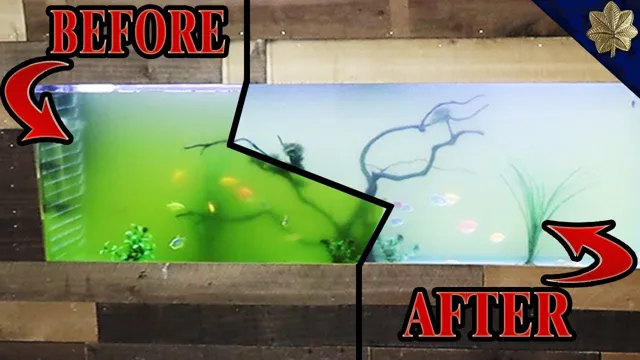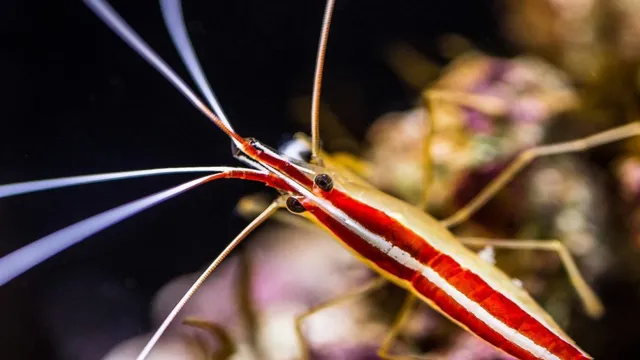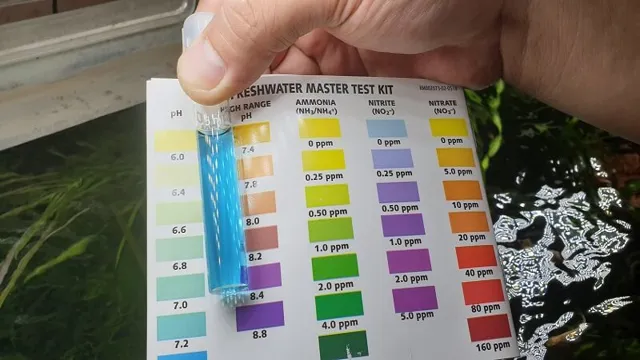Do you have green grass growing at the bottom of your aquarium? While it may look nice, it can actually harm the environment of your fish tank. Not only can it block filters and airflow, but it can also create an imbalance in the ecosystem by using up oxygen. That’s why it’s essential to get the grass at the bottom of your aquarium under control.
In this blog post, we’ll explore the causes of grass growth in tanks and offer some tips on how to remove it safely and effectively. So, let’s dive in!
Introduction
If you’re looking to create a lush, green underwater paradise in your aquarium, getting grass to grow at the bottom is a great way to start. Not only does it provide a beautiful and natural look, but it can also improve the water quality by oxygenating the water and filtering out harmful toxins. One of the best ways to get grass to grow at the bottom of your aquarium is to use hardy plants like Java Moss or Marimo Moss Balls.
These plants are easy to care for and can thrive in a variety of water conditions. Make sure to provide adequate lighting and nutrient-rich substrate to promote healthy growth. With a little bit of patience and care, you’ll soon have a beautiful and vibrant aquatic ecosystem in your home.
Why is grass important at the bottom of aquarium?
Grass is an essential element in every aquarium, especially at the bottom of the tank. You might wonder why grass has so much significance in the aquatic environment, but it has several reasons. The primary reason is that it acts as a natural filter and provides an ideal hiding place for fish.
Aquatic plants like grass absorb harmful toxins and excess nutrients from the water, naturally purifying the aquatic environment. The particles and debris caught in the grass also serve as a food source for tiny organisms, which further enhance the ecosystem’s health and balance. In addition to its filtration qualities, grass at the bottom of the aquarium provides cover for fish like fry and baby shrimp, protecting them from predators.
Therefore, having a well-maintained grass bed at the bottom of your aquarium is critical in ensuring the aquatic ecosystem’s sustainability and health.

Selecting the Right Type of Grass for Your Aquarium
Wondering how to get that lush green grass at the bottom of your aquarium? The type of grass you choose depends on the size of your tank, lighting, water parameters, and fish compatibility. Some popular choices are Dwarf Hairgrass, Java Moss, and Monte Carlo. Dwarf Hairgrass is a tall and thin plant that grows quickly and requires strong lighting.
Java Moss is a low-maintenance plant that grows in clumps and is great for smaller tanks. Monte Carlo creates a carpet-like appearance with its tiny leaves but requires CO2 injections and strong lighting. As you consider which grass to add to your tank, think about the aesthetic you want to create and the needs of your fish.
Overall, selecting the right type of grass can add beauty to your aquarium and provide a natural home for your aquatic friends.
Choose a grass that will thrive in your aquarium environment
Selecting the right type of grass for your aquarium is crucial in ensuring the health and vibrancy of your underwater habitat. Consider the specific environment of your tank, including lighting, temperature, and water flow when choosing a type of grass. For instance, if you have low lighting and a cooler temperature, a slower-growing grass like Java Moss may be the best option.
Alternatively, if you have higher lighting and warmer water, a fast-growing grass like Anubias can thrive. Another factor to consider is whether you have a planted or unplanted tank. While planted tanks require grass that can root into the substrate, an unplanted tank can benefit from floating grass like Duckweed. (See Also: How to Go About Georgia Aquarium: A Step-by-Step Guide to Plan Your Visit)
Ultimately, selecting the right grass for your aquarium will depend on a variety of factors unique to your tank environment. By doing research and considering your tank’s specific needs, you can create a healthy and beautiful underwater environment for your aquatic pets to thrive in.
Preparing the Bottom of Your Aquarium for Planting Grass
If you’re looking to create a lush underwater landscape for your aquarium, planting grass can be a great addition. However, before you can start planting, you’ll need to prepare the bottom of your aquarium. First, ensure that your aquarium substrate is suitable for growing plants.
Use a nutrient-rich substrate that provides plenty of essential minerals. Avoid using gravel, which doesn’t provide the necessary nutrients for plant growth and can damage their roots. Next, consider adding a layer of activated carbon to the bottom of your aquarium to prevent algae growth.
Finally, pack down the substrate to create a level, stable base. Once you’ve prepared your aquarium’s foundation, you’re ready to start planting. Choose a grass species that’s well-suited to your aquarium’s lighting and water conditions, and be careful not to overplant, as too many plants can cause issues with oxygen exchange.
With a little preparation and care, you can create a beautiful, thriving grass garden for your aquarium.
Clean the bottom of the aquarium before planting the grass
Before planting grass in your aquarium, it’s crucial to prepare the bottom to ensure a healthy and thriving environment for your plants. First, remove any debris or waste on the bottom of the tank. Use a siphon or aquarium vacuum to remove any uneaten food or waste that may have accumulated.
Next, consider adding a layer of substrate to aid in the growth of aquatic plants. Sand or gravel can be used as a substrate, and it’s important to choose a type that won’t negatively impact the water chemistry. After adding the substrate, ensure that it’s spread evenly across the bottom of the tank.
Finally, make sure the water temperature and pH levels are suitable for the types of plants you plan to add to the tank. By taking these steps before planting grass, you’ll help to create a healthy environment for aquatic life to thrive in your aquarium.
Planting Your Grass in the Aquarium
Are you wondering how to get grass at the bottom of your aquarium? First, it’s important to choose the right type of grass. There are several options, such as dwarf hairgrass or microsword, that are easy to plant and maintain. Before planting, prepare the substrate by adding a layer of aquarium soil or sand.
Make small holes in the substrate and gently insert each plant with tweezers. It’s important to not bury the grass too deep or too shallow, as this can hinder growth. Once the plants are in, add a nutrient-rich fertilizer to encourage growth and supplement with CO2 if necessary.
With regular maintenance and proper lighting, your aquatic grass can thrive and provide a natural, green addition to your aquarium. (See Also: How to Prune Aquarium Stem Plants: The Ultimate Guide for Aquarists)
Properly plant the grass in the bottom of the aquarium
If you’re looking to create a lush and beautiful aquarium, planting grass in the bottom is a great way to achieve that. But how do you properly plant the grass to ensure it grows well? Firstly, make sure you have the right type of grass for your aquarium. Some species, like Dwarf Hairgrass, work better in aquarium environments than others.
Next, you’ll want to prepare the substrate. This will help anchor the seeds and allow for healthy root growth. Use a fine-grained substrate and make sure it’s spread evenly across the bottom.
Then, scatter the seeds across the substrate and cover with a thin layer of substrate. Make sure the seeds are evenly spaced, so they have enough room to grow. After planting, keep the aquarium lit for 12-14 hours each day and maintain a consistent temperature of around 75-78 degrees Fahrenheit.
With a little patience and care, you’ll soon have a flourishing aquarium full of vibrant green grass!
Maintaining Your Grass in the Aquarium
If you’re wondering how to get grass at the bottom of your aquarium, maintaining it may be easier than you think. One key to keeping aquatic grass healthy is to ensure that there is enough light penetrating the water. This means making sure that the aquarium is positioned somewhere with access to natural light or investing in an appropriate lighting system.
It’s also important to make sure that your water chemistry is correct, which means regularly testing ammonia, nitrite, and nitrate levels. Adequate fertilization is equally crucial, and there are many different options for fertilizing aquatic plants, including special plant substrates and liquid fertilizers. With consistent effort and care, it’s possible to create a lush, healthy bed of grass in your aquarium that both you and your aquatic pets can appreciate.
Regularly maintain your grass with proper care and attention
When it comes to keeping an aquarium, maintaining your grass is a crucial aspect of ensuring the health of your aquatic environment. Grass acts as a natural filter, keeping the water clean and oxygenated. However, failing to give your grass the proper care and attention it needs can easily lead to problems such as overgrowth and nutrient imbalances.
Regularly trimming the grass and removing any dead or decaying leaves will help prevent this. Additionally, providing adequate lighting and fertilization is essential to ensure healthy growth. Just like a garden, giving your aquarium grass the right amount of nutrients and light will have it thriving in no time.
So, make sure to incorporate regular maintenance of your aquarium grass into your overall care routine to keep your aquatic environment healthy and thriving.
Conclusion
Well, if you want to know how to get grass at the bottom of your aquarium, the answer is simple: you need to break out your green thumb and put in some hard work. Just like any garden, a lush underwater landscape requires the right tools, techniques, and even a little bit of patience. Whether you’re dealing with live plants or synthetics, there are plenty of options out there to help your aquatic garden thrive. (See Also: How to Put a Water Lily into an Aquarium: A Beginner’s Guide to Aquatic Gardening)
.. and who knows, maybe it will be the envy of all the fish in the tank!”
FAQs
What are some ways to encourage grass growth at the bottom of an aquarium?
Some ways to encourage grass growth at the bottom of an aquarium include providing adequate lighting, adding nutrient-rich substrates, and regularly trimming the grass to promote new growth.
What types of grass are best suited for growing at the bottom of an aquarium?
Some of the best types of grass for growing at the bottom of an aquarium include microsword, dwarf hairgrass, and Java moss.
How often should you add fertilizers to the aquarium to promote grass growth?
It’s recommended to add fertilizers once or twice a week to promote grass growth. Be sure to use a fertilizer specifically formulated for aquarium plants to avoid harming the fish.
Can you grow grass at the bottom of an aquarium without a substrate?
While a substrate can help promote grass growth, it is not necessary. Some species of grass can attach to rocks or other materials at the bottom of the aquarium.
How can you prevent algae growth from suffocating the grass at the bottom of the aquarium?
To prevent algae growth from suffocating the grass at the bottom of the aquarium, reduce the amount of light the aquarium receives and add a few algae-eating fish or snails to help control the population.
What is the ideal temperature range for growing grass at the bottom of an aquarium?
The ideal temperature range for growing grass at the bottom of an aquarium is between 68- and 82-degrees Fahrenheit.
How can you tell if the grass at the bottom of the aquarium is healthy?
Healthy grass at the bottom of an aquarium will have bright green leaves, show new growth, and have roots that firmly anchor it to the substrate.


